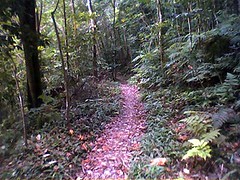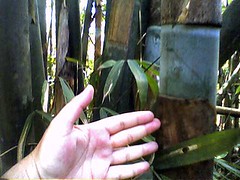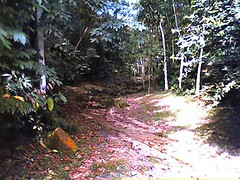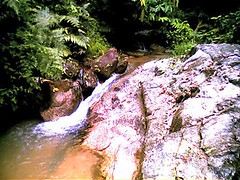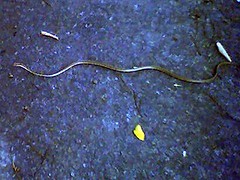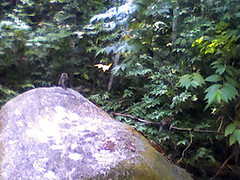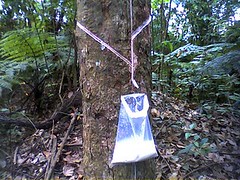What you'll need:
- about 3/4 of flour,
- 3/4 cup of oil,
- 4-5 large yellow onions chopped fine (it's ok to cry sometimes),
- smoked sausage (say around 4 big ones - total length 40-50" and 1” diameter),
- chicken (I always use breast meat with the bone, my preference, but whole chicken will make it taste better),
- chopped ham (optional but I like it… adds more flavor)
- oysters (ok, this is optional. I don't particularly like oysters but it does give it a richer flavor. My dad shucks his own oysters and saves the 'juice'. He puts this in the gumbo... and wow... what a difference),
- chicken broth (again, adds a bit more flavour),
- gumbo file (dried sassafras leaves ground to a powder. This is used to sprinkle on the individual bowls of gumbo for flavour. You don't cook it with the gumbo),
- cooked rice.
Now here's what you do:
First, let's make the roux. This is the base for a lot of cajun dishes. Pour in the oil, 1/2 to 3/4 cup, in a big heavy bottom pot. Mix in the flour. A rule of thumb is equal parts flour and oil. Stir over medium fire continuously. You don't want it to stick and burn on bottom. You need to continue doing this until it almost turns the color of milk chocolate, like a hersey's kiss... mmmm.... hersey kisses... OK, this takes time. Making the roux is the most tedious and time consuming part of making the gumbo. When it's almost chocolate colored (be careful not to burn it... stir, stir, stir), mix in the chopped onions and keep on stirring. You gonna have to stir for almost the same amount of time. You want the edges of the chopped onion pieces to turn slightly brown. If you get impatient and don't brown the onions, they will float in the gumbo. When browned, they won't float. OK, done? Now you should have a really great smelling kitchen and a pot of dark brown gunk. That's the roux you're looking at. You did good.
Now the easy part. If the sausage is fatty, either microwave it a bit or cook it a bit in another pan to remove some of the oil. Chop the sausage into pieces about the size of a standard checker... you know the game? Throw it in the pot. Mix it up. Next, throw in the ham and chicken and mix it up a bit. I know, kinda hard to stir this stuff up, so why don't you add some chicken broth and/or oyster juice and water. Add enough so that you have a soup. I don't like it too 'watery', but my dad really does make it as consistent as soup. If you're gonna add oysters, wait until the chicken is cooked to add. If you add too early, the oysters will be overcooked. Add salt to taste, put the cover on, sit back, visit the Q, and stir occasionally. When the chicken is cooked, so is the gumbo. Let the gumbo 'sit' for a while. Excess oil will float to the top and you can scoop it out.
To serve, put just a bit of rice in a bowl and lotsa gumbo on top. Remember, gumbo is more like a soup. It's not a rice dish. The rice is added to fill up us poor cajuns. You can sprinkle some file on top and enjoy. By the way, it will always taste better the next day.
Hope you enjoy... cajun cooking is more about 'feeling' than precise measurements. Your next gumbo will be even better!!!
Note: I like to add a lot of sausage. You can add more chicken, sausage, or ham. It really doesn't make a difference.
-----------------
For seafood gumbo, instead of adding chicken, add peeled shrimp, crabs (cleaned but not shelled… remove back, pull out gunk, and break in half), oysters. This is also yummy.
